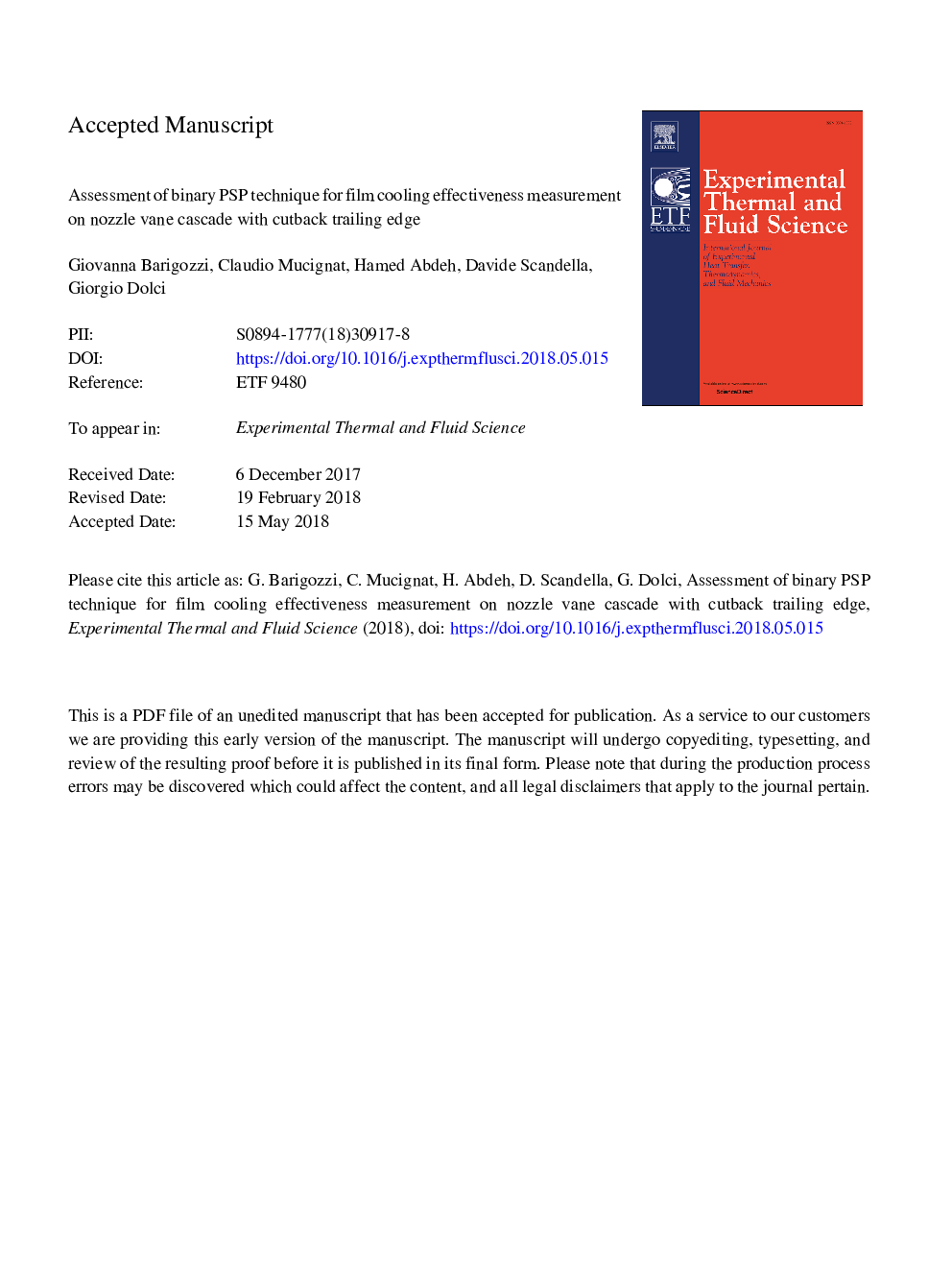| Article ID | Journal | Published Year | Pages | File Type |
|---|---|---|---|---|
| 7051646 | Experimental Thermal and Fluid Science | 2018 | 34 Pages |
Abstract
The present paper shows the results of an experimental investigation aiming to assess advantages and disadvantages of binary Pressure Sensitive Paints (PSP) technique for the measurement of film cooling effectiveness distribution. For this purpose, two test cases pertaining to gas turbine high pressure nozzle vane cooling systems have been used: a classical flat plate model with coolant injection through a single large scale shaped hole and a high loaded nozzle vane cascade with a pressure side cooling system that features two rows of cylindrical holes followed by a pressure side cutback with film cooling slots. Both models have been extensively tested: in particular, film cooling effectiveness data measured by means of well established thermal measurement techniques (Infrared thermocamera for the flat plate and wide banded Thermocromic Liquid Crystals for the vane cascade) are available from the literature. Pressure Sensitive Paints technique was able to provide high quality data all over the investigated test cases and operating conditions. Moreover, the binary version allows to fully eliminate any spurious temperature influence, thus making this technique well suited for the analysis of complex flows and geometries.
Keywords
Related Topics
Physical Sciences and Engineering
Chemical Engineering
Fluid Flow and Transfer Processes
Authors
Giovanna Barigozzi, Claudio Mucignat, Hamed Abdeh, Davide Scandella, Giorgio Dolci,
